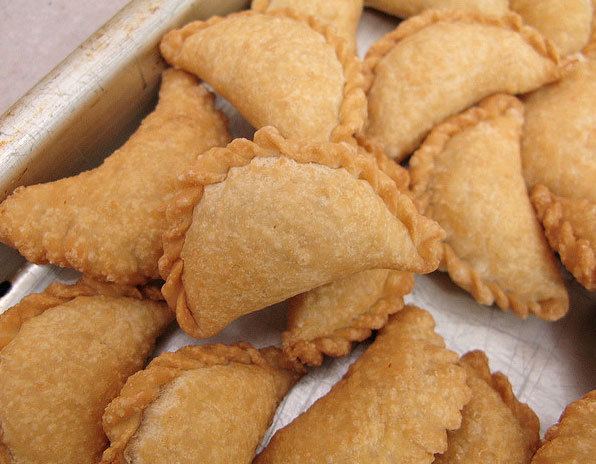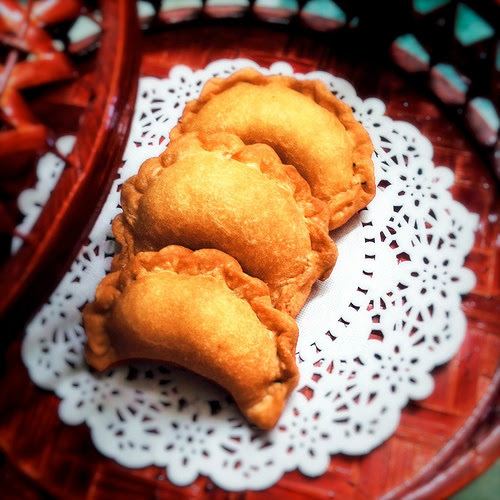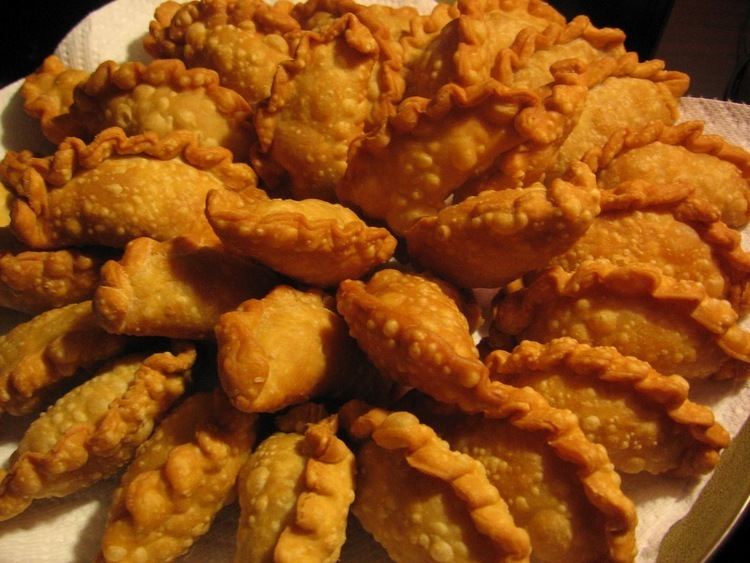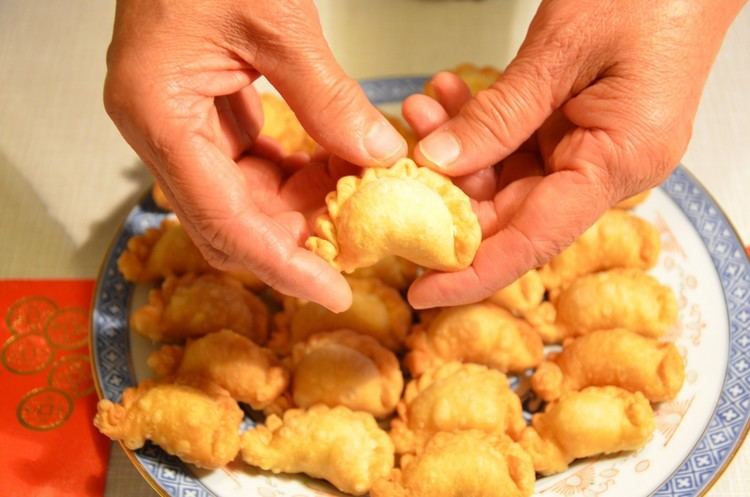Alternative names Gok zai (角仔) | ||
 | ||
Similar Jian dui, Water chestnut cake, Taro cake, Nian gao, Buddha's delight | ||
jau gok yau gok easy recipe
Jau gok or Yau gok or jiaozi are traditional dumplings found within Cantonese cuisine originating from Guangdong Province in China. They are most common during Chinese New Year and are consumed in Cantonese-speaking regions and communities, including Hong Kong and Malaysia.
Contents

Names
There are quite a number of unofficial English names associated with this dish:
Origin

Yau Gok were shaped to resemble money. These dumplings look just like ancient forms of Chinese currency, like the tael and jau gok. That's why those who follow the Taoist religious philosophy believe that eating one brings good fortune. In the Record of Rights penned during the Zhou dynasty (1,056-256 B.C.E.), the first Yau Gok recipe was mentioned as such: “Use two portions of rice and one portion meat; fold them together and then fry.” Historians can’t pinpoint where the recipe first arose, but most agree that it was of Chinese origin.
Preparation

The dumpling wrap is first made of glutinous rice dough. A dumpling shape is formed, and then a batch of dumplings are deep fried in a wok.
Salty

The savory version are generally called haam gok zai (simplified Chinese: 咸角仔; traditional Chinese: 鹹角仔; pinyin: xián jiǎo zǐ; Jyutping: haam4 gok3 zai2). There is a range of popular fillings that varies depending on regional culture. Common ingredients include pork, pieces of Chinese sausages, pieces of Chinese black mushroom. Because of the meat ingredients, this dumpling is quite greasy.
Sweet coconut
The sweet coconut version are generally called tim gok zai (Chinese: 甜角仔; pinyin: tián jiǎo zǐ; Jyutping: tim4 gok3 zai2). The standard filling has desiccated (dried) coconut crumbs mixed with sugar. After the frying, this version is crunchy. This version is suitable for vegetarians.
